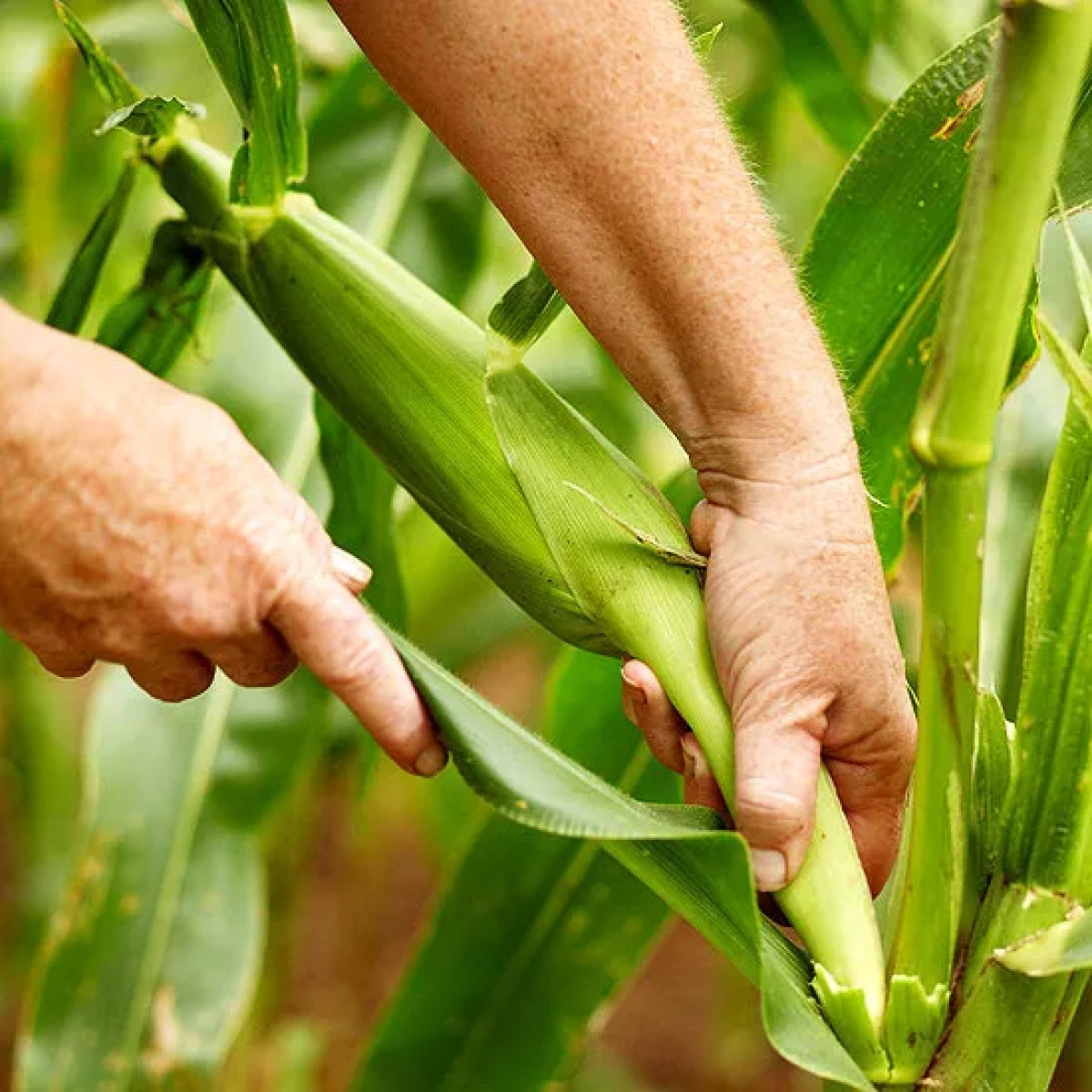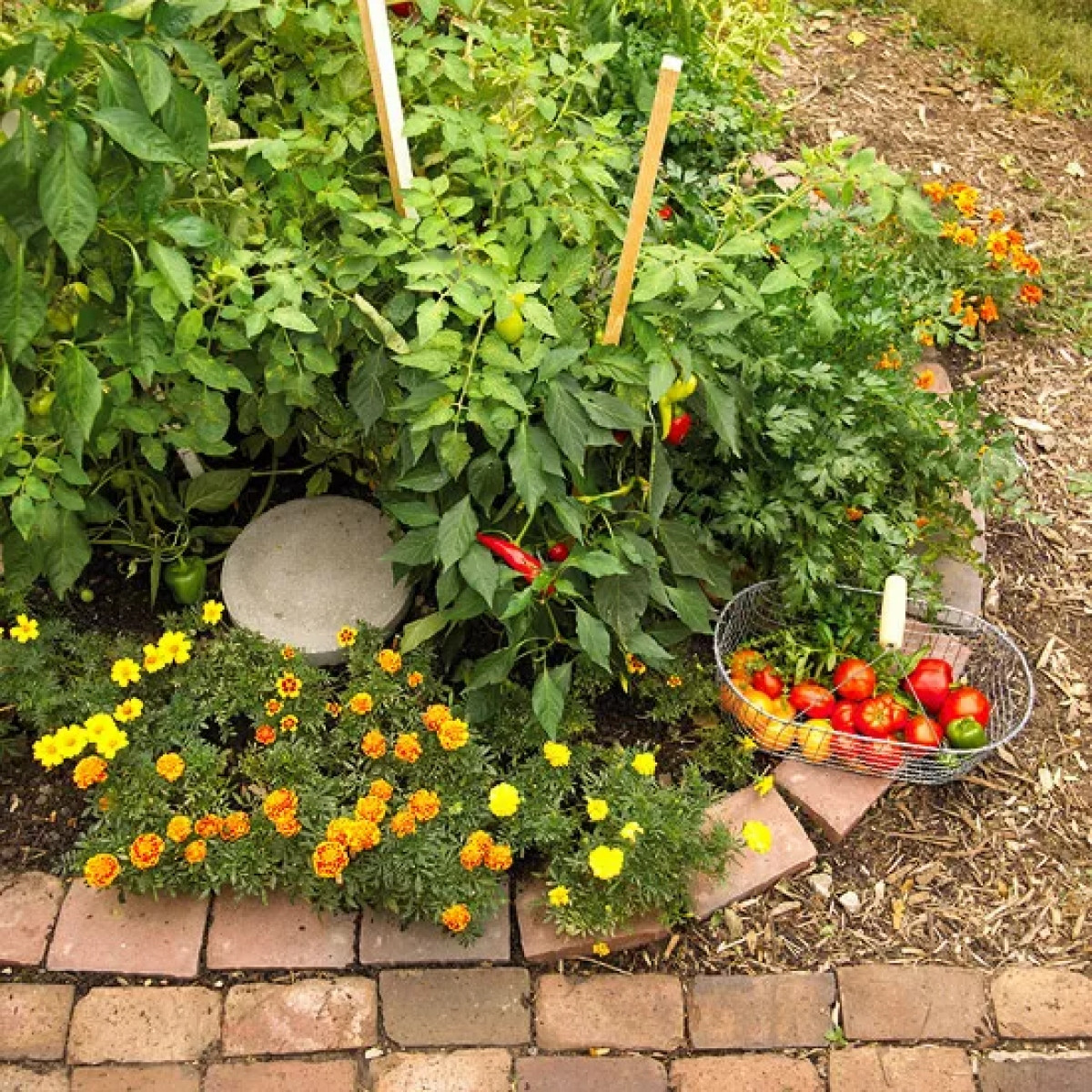Starting a Intensive Garden
The surest way to increase productivity from a vegetable garden is to reduce the distance between plants. The idea is to plant wide strips, thus reducing the area of land dedicated to pathways.
To start an intensive garden, create a planting bed of any length, but limit its width to 0.9m to 1.2m so that you can reach the middle of the bed from both sides. Although not necessary, enclosing it from above is also a good idea.
When you enclose the bed with vertical boards, it not only looks neater but also prevents the soil from eroding into the pathways. You will also find it much easier to install fences or supports for vertical plant growth.

Trellis with Climbing Plants
You’ll find that some types of vegetables perform better when given support. They do well on trellises, fences, and other structures. By growing vertically instead of sprawling, your garden will produce more per square metre. Trellised vegetables are also less susceptible to diseases.
For Tomatoes: Plant tomatoes in a wire cage or support them by tying them to a 2m tall wooden stake driven deep into the ground. Caged tomatoes require less care but are more prone to fungal diseases. Staked tomatoes benefit from pruning to a single stem; this means continually removing new branches that grow in the crotch between the main stem and the leaf.
For Beans: While this type of plant takes longer to mature compared to other types of beans, it bears fruit over a longer period. You should let them climb on sturdy wooden stakes or trellises made of bamboo.
For Cucumbers: Vining cucumbers do well on fences and wire mesh. The fruits of trellised cucumbers also tend to be straighter and more uniform than those grown on the ground.
For Peas: Snow peas are one of the highest-yielding vegetables in the spring garden. By selecting tall climbing varieties, you can easily grow them on a 1.5m to 1.8m tall trellis. Be careful when selecting to avoid brittle vines.
For Squash and Pumpkins: These long-season crops require frequent and hard work if you choose to grow them vertically. Larger varieties may even require sling support made of fabric to support the fruit. You will also need to tie the vines to the support using fabric strips; avoid string or twine that can cut into the vines.
Extend the Growing Season
The simplest form is to plant quick-production varieties in a limited time frame of a few weeks. For example, instead of sowing 40 kernels of corn all at once, you can sow 10 kernels of corn each week for a span of four weeks. This will provide you with corn for a month instead of all at once.
Another example is to plant bush beans every two weeks to ensure a continuous supply. If you want three crops, plant one-third of the bed after every two weeks. Other crops that benefit from this successive planting method include corn, carrots, beets, and spinach.
Planting after Harvested Crops
This type of successive planting requires a little more planning. It means that when one type of plant has finished producing and been harvested in your garden, remove it and plant something else in that spot.
For example, after harvesting peas, remove the vines and plant cucumbers in their place. The key to the success of this system is to have a batch of fresh seeds or seedlings ready when the first crop is being done. This works best when you start with vegetables that grow well in cool weather but not in the heat of summer. In addition to peas, you can use this technique with spinach, lettuce, and beets.

Companion Planting
This technique takes advantage of the fact that some vegetables grow quickly while others take longer. For example, if you plant carrots and beets together, you can harvest the beets after about 30 days, while the carrots are still small. Another option is to combine a vertical plant (such as tomatoes) with a low-growing plant (such as cucumbers).
Some good choices for companion planting, intercropping, for a good yield include:
- Planting cucumbers and squash under a trellis with tomatoes.
- Surrounding corn with lettuce or peas with beets.
- Combining quick-growing and slow-growing crops such as spinach with tomatoes, carrots with green beans, basil with squash, garlic with potatoes, or beets with sweet corn.
With a little personal experience, learning more tips, and choosing suitable crops for the climate and soil in your area, you will definitely be able to have a satisfying garden harvest.
Source: VOV

































